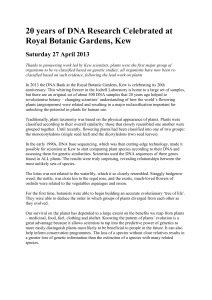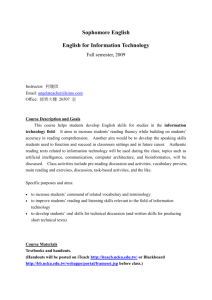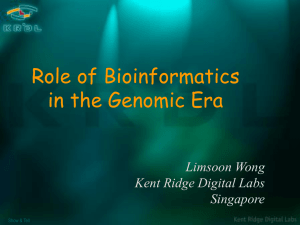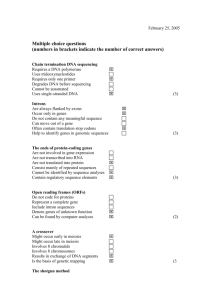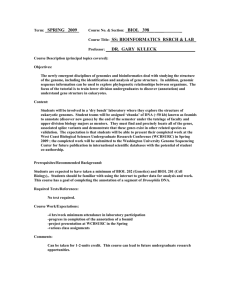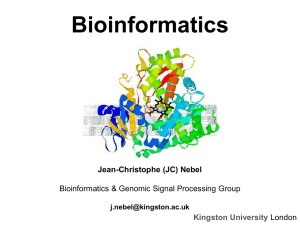Reading Guide for Bioinformatics (doc)
advertisement
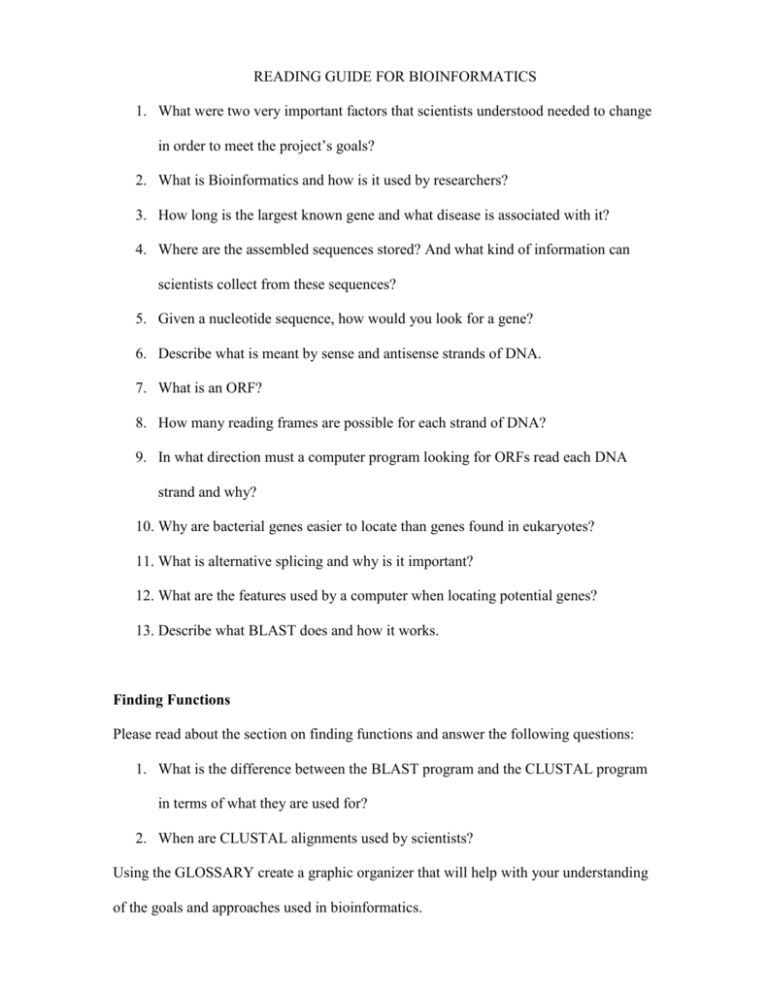
READING GUIDE FOR BIOINFORMATICS 1. What were two very important factors that scientists understood needed to change in order to meet the project’s goals? 2. What is Bioinformatics and how is it used by researchers? 3. How long is the largest known gene and what disease is associated with it? 4. Where are the assembled sequences stored? And what kind of information can scientists collect from these sequences? 5. Given a nucleotide sequence, how would you look for a gene? 6. Describe what is meant by sense and antisense strands of DNA. 7. What is an ORF? 8. How many reading frames are possible for each strand of DNA? 9. In what direction must a computer program looking for ORFs read each DNA strand and why? 10. Why are bacterial genes easier to locate than genes found in eukaryotes? 11. What is alternative splicing and why is it important? 12. What are the features used by a computer when locating potential genes? 13. Describe what BLAST does and how it works. Finding Functions Please read about the section on finding functions and answer the following questions: 1. What is the difference between the BLAST program and the CLUSTAL program in terms of what they are used for? 2. When are CLUSTAL alignments used by scientists? Using the GLOSSARY create a graphic organizer that will help with your understanding of the goals and approaches used in bioinformatics.



